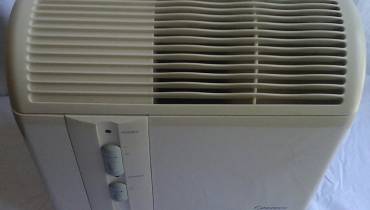How to Stop Smoking (Plus Top Tobacco Alternatives)

Smoking has a host of negative health effects: It stains teeth, makes it harder to breathe, leads to lung cancer, heart diseases, pregnancy complications, anxiety, erectile dysfunction, oral cancer, poor vision, and plenty of other complications.
In fact, the American cancer society (ACS) reports that combustible tobacco use is responsible for approximately half a million deaths per year and 30% of all cancer deaths in the United States.
However, despite people knowing the issues that come with smoking and them wanting to quit, nicotine cravings can be very strong, and many people find themselves falling off the wagon.
Tips to Stay Away from the Stick
If you are one of the people who has always wanted to quit smoking but you fail, there are plenty of cessation tips and smoking alternatives you may use to distract yourself from lighting up.
Among the top ways to stay away from the stick include:
I. Create distractions
As much as there are smoking alternatives to create distractions and stop you from smoking, these alternatives have nicotine that you need to reduce its intake to live a healthy life.
Even if you have the smoking alternatives at your disposal, don’t take them every time you have a craving — delay it by creating distractions.
For example, when the craving kicks in, take a glass of water instead of reaching for that nicotine patch or pouch.
II. Be active
Leading an active life will also go a long way towards helping you stop smoking. Exercising produces anti-craving chemicals, which means you go for a long time without craving nicotine.
The longer you go without the cravings, the closer you are to beating the addiction.
The beauty of it is that you don’t have to engage in strenuous exercises such as lifting heavy weights—light exercises such as squats, walking, and jogging are enough.
Tobacco Smoking Alternatives
Some common alternatives to smoking people use to curb nicotine cravings include:
1. Electronic cigarettes
Also known as Ecigs, electronic cigarettes are small, refillable devices that resemble cigarettes and use battery power to vaporize their contents.
The cigarettes can deliver nicotine without tobacco smoke by heating a flavoring solution, nicotine, additives, and propylene glycol.
Most smoking problems are due to combustible tobacco products, so electronic cigarettes are arguably a much safer alternative.
While Ecigs are an alternative to smoking, you should note that they aren’t pharmacologically controlled, and the nicotine content in them differs substantially among different Ecig brands.
2. HNB devices
Heat-not-burn (HNB) devices heat a disposable tobacco stick with a thin metallic blade.
Unlike Ecigs, HNB devices don’t vaporize liquids containing flavorings, glycol, propylene, or vegetable glycerol and, as a result, they emit significantly reduced levels of toxicants.
This reduction in emissions leads to a reduction in both in vitro cytotoxicity and mutagenicity of both the gas and particulate phases of third-hand smoke.
3. Nicotine pouches
These are nicotine-containing pouches you insert behind your upper lip, and discretely get your nicotine fix. Since they don’t contain tobacco or other chemical additions, nicotine pouches are often used as a less harmful alternative to cigarette smoking.
Nicotine pouches come in different flavors, so do your research to find the flavor that appeals to your taste. The number of pouches you take depends on your cravings. If you take one pouch and still have the cravings, take another until you are satisfied.
To be on the safe side, however, it is always advised to talk to your doctor about this option beforehand and find out the best number of pouches to take every day.
Many people using nicotine pouches as an alternative to smoking are often confused about whether they should spit or swallow the saliva. Generally, to maintain decency and avoid polluting the environment, you should always swallow the saliva—don’t spit.
4. Nicotine gum
Here, you place the nicotine gum in your mouth and chew. If using it correctly, you should start feeling the effects of the gum within 5-10 minutes.
Nicotine gum comes in various flavors and doses, so it’s wise to talk to your doctor or reliable specialist so that you have an idea of the right type of gum to get.
5. Nasal sprays
Nicotine nasal sprays are similar in size and shape to allergy and nasal congestion spray, but instead of inhaling from your sinus cavities, you let the spray sit in your nostril.
Nasal sprays send nicotine straight to the bloodstream, so you don’t have to wait long for the cravings to go away.
Before you use them, however, get the input of a qualified medical expert to properly use them and avoid potential side effects like runny nose, nasal irritation, watery eyes, or getting hurt.




















